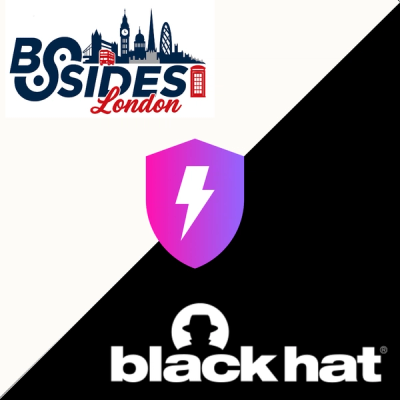
Security News
PyPI Expands Trusted Publishing to GitLab Self-Managed as Adoption Passes 25 Percent
PyPI adds Trusted Publishing support for GitLab Self-Managed as adoption reaches 25% of uploads
nextline-graphql
Advanced tools
The plugin-based framework of a Python API server.
Table of Contents
This package provides the framework for a plugin-based Python API server. Plugins can implement endpoints and services.
Nextline consists of multiple packages. This package, nextline-graphql, provides the framework for the backend API server.
| Package | Language | Release | Build | Coverage |
|---|---|---|---|---|
| nextline | Python |  | ||
| apluggy | Python |  | ||
| nextline‑graphql | Python |  | ||
| nextline‑rdb | Python |  | ||
| nextline‑schedule | Python |  | ||
| nextline‑alert | Python |  | ||
| nextline‑test‑utils | Python |  | ||
| nextline‑web | TypeScript |  |
The plugin system of nextline-graphql is apluggy.
These plugins are included in this package.
These plugins are not included in this package. They can be installed separately.
The frontend web app is currently in a single package. The development of a plugin-based system is planned.
The section shows how to run the Nextline backend API server. How to run the frontend web app is described elsewhere.
Docker images of the Nextline backend API server are created as ghcr.io/simonsobs/nextline-graphql. These images are created by the Dockerfile. No external plugins are included in the images.
Use, for example, the following command to run as a Docker container.
docker run -p 8080:8000 ghcr.io/simonsobs/nextline-graphql
If you access to the API server with a web browser, you will see the GraphQL IDE: http://localhost:8080/.
To include external plugins, you can create a new Docker image with ghcr.io/simonsobs/nextline-graphql as the base image. For example, nextline-rdb shows how to create a new Docker image with nextline-rdb as an external plugin.
You can create a virtual environment, install packages, and run the API server as follows.
python -m venv venv
source venv/bin/activate
pip install nextline-graphql
pip install uvicorn
uvicorn --lifespan on --factory --port 8080 nextlinegraphql:create_app
Check with a web browser at http://localhost:8080/.
If you check out external plugins, nextline-graphql automatically detects them as plugins. An example can be described in nextline-rdb.
nextline-graphql uses dynaconf for configuration management. The nextline-graphql framework itself has configuration for CORS and logging. The internal plugins have configurations. External plugins can extend the configuration.
These CORS (Cross-Origin Resource Sharing) settings will be given to
allow_origin and allow_headers of Starlette's
CORSMiddleware.
| Environment variable | Default value | Description |
|---|---|---|
NEXTLINE_CORS__ALLOW_ORIGINS | ['*'] | A list of allowed origins, e.g., ["http://example.com:8080"]. The default value ("*") allows any origins. |
NEXTLINE_CORS__ALLOW_HEADERS | ['*'] | A list of allowed HTTP request headers. For example, ['remote-user', 'remote-name', 'remote-email'] can be appropriate values if Authelia is used. Some headers such as Content-Type are always allowed (See the Starlette doc). The default value ("*") allows any headers. |
NEXTLINE_CORS__ALLOW_CREDENTIALS | false | Whether to support cookies. If true, the wildcard ("*") cannot be used for NEXTLINE_CORS__ALLOW_ORIGINS or NEXTLINE_CORS__ALLOW_HEADERS. They need to be listed explicitly. |
See default.toml.
graphql plugin| Environment variable | Default value | Description |
|---|---|---|
NEXTLINE_GRAPHQL__MUTATION_ALLOW_ORIGINS | [*] | A list of allowed origins for GraphQL Mutations. The default value ("*") allows any origins.* |
ctrl plugin| Environment variable | Default value | Description |
|---|---|---|
NEXTLINE_CTRL__TRACE_MODULES | false | By default (false), Nextline only traces the main Python script. If true, Nextline traces execution of imported Python modules as well. |
NEXTLINE_CTRL__TRACE_THREADS | false | By default (false), Nextline only traces the main thread. If true, Nextline traces execution of other threads as well. |
How to check out code from GitHub for development:
git clone git@github.com:simonsobs/nextline-graphql.git
cd nextline-graphql/
python -m venv venv
source venv/bin/activate
pip install -e ./"[tests,dev]"
To run
uvicorn --port 8080 --lifespan on --factory --reload nextlinegraphql:create_app
FAQs
Python framework for building plugin‑based HTTP API servers.
We found that nextline-graphql demonstrated a healthy version release cadence and project activity because the last version was released less than a year ago. It has 1 open source maintainer collaborating on the project.
Did you know?

Socket for GitHub automatically highlights issues in each pull request and monitors the health of all your open source dependencies. Discover the contents of your packages and block harmful activity before you install or update your dependencies.

Security News
PyPI adds Trusted Publishing support for GitLab Self-Managed as adoption reaches 25% of uploads

Research
/Security News
A malicious Chrome extension posing as an Ethereum wallet steals seed phrases by encoding them into Sui transactions, enabling full wallet takeover.

Security News
Socket is heading to London! Stop by our booth or schedule a meeting to see what we've been working on.